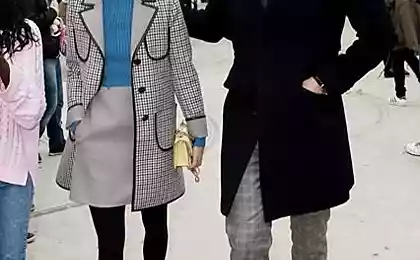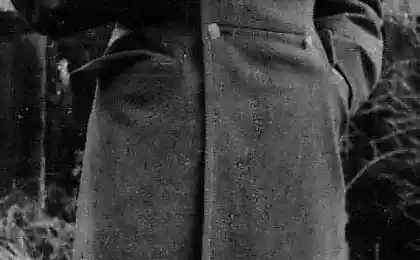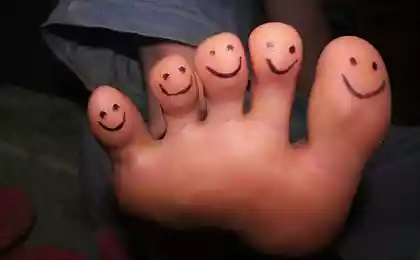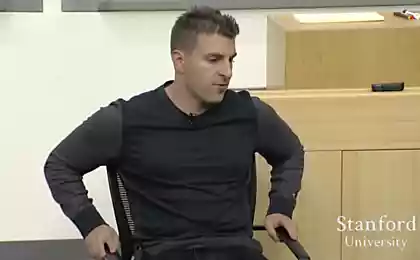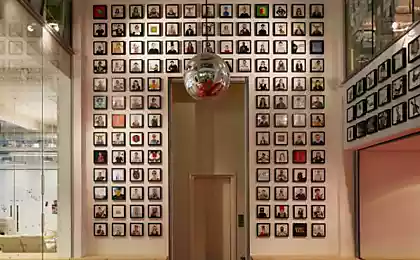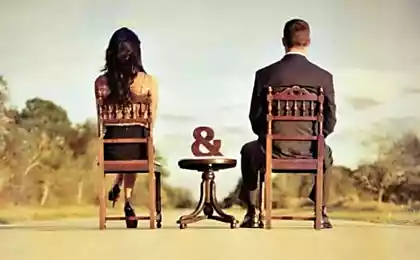213
How Using Emoticons Makes Us Less Emotional
Emoticons have taken over the world: classics are translated into the language of emoji, they are used in clips, and even there are talks about creating a special social network for the exchange of icons. Is it possible to analyze this craze in terms of psychology and culture? In an article for the New Republic website, Alice Robb explains what linguists think about the emoji, who invented the first emoji, and whether it is possible to create a visual language that everyone understands. Publishing the translation.

A few weeks ago, after saying goodbye to a friend who had moved across the country, I sent her a sobbing emoji. She responded with a picture of a chicken revealing a hug in my direction. We could exchange messages from the heart. Or maybe it was ironic. I'm still not sure. It is possible that this friend of mine and I are just emotionally untenable, but I put at least some of the blame on emoji: they allowed us to have a dialogue without saying a word to each other, gave us the opportunity to do without articulating genuine feelings. Not surprisingly, the 2000s generation embraced emojis and their pixelated siblings, emoticons, with enthusiasm. Ambiguous, artificial, cute, they’re perfect for a generation that ironically sends out Hallmark internet postcards, uses step-by-step instructions on how to “think deeply,” and shortens the phrase “serious meaningful discussions” to initial letters.
Bloggers on the Internet enthusiastically discuss the prospect of 250 new emoji heroes at the end of the month. There are news that soon will launch a new social network – “Emoji”, where users will communicate exclusively with the help of emoticons. And two days after this announcement, more than 50,000 people register usernames there (which, of course, also consist of chains of emojis). Some enthusiasts even believe that emojis have literary potential. After a successful $3,500 Kickstarter campaign, data engineer Fred Benenson began translating every line of Moby Dick into matching emojis. Using Amazon’s crowdsourcing project, Benenson was able to find thousands of strangers willing to help with the project. Three people simultaneously translated each line of the Melville text, the second group chose the best of the three versions. Benenson sells the resulting product - "Emoji Dick" - over the Internet; a hardcover copy costs $200 (those who are only slightly interested can choose a PDF file for five dollars). Last year, the Library of Congress requested a copy of the book. Benenson says he makes between $100 and $300 a month.
Emojis and emoticons change the way we communicate faster than linguists notice the metamorphoses and lexicographers regulate them. "This is the Wild West of the emoji era," linguist Ben Zimmer told me over the phone. - People make rules on the go. It is a completely organic process.”
581706
Research on the modern phenomenon of emoji is led by Stanford linguist Tyler Schnobelen. Analyzing emoticons on Twitter, Schnobelen found that their use varies according to geographical location, age, gender and social class of users, i.e. it is built on exactly the same principles as the development of dialects or regional accents. Groups of friends develop the habit of putting certain emoticons in internal correspondence, just as they form their own slang that only they understand. "You start using new emojis the same way you start using other words when you get outside of your usual social circle," Schnobelen explains. He immediately drew attention to the difference between those who put a hyphen to indicate the nose in the emoji ":-" and those who prefer a shorter version, without a hyphen. “The nose is associated with tradition,” says Schnobelen. People who do not forget about the nose also tend to spell words correctly and use abbreviations less often. Twitter is known to gravitate to blur demographic information about its users as much as possible, however, according to Schnobelen, “those who do not use noses in emojis usually write more about some Miley Cyrus or Justin Bieber.” They have younger interests and aspirations, whether they are young or not.”
The gender of those who use emoticons is another topic of controversy. "Based on an ideology that says a woman is usually more emotional than a man, a popular claim is that women put on more emojis," Schnobelen explains. It is quickly stipulated that analyzing the use of emojis (or any linguistic patterns at all) within the framework of sexual binary opposition is a simplification. However, studies show that women use emoticons disproportionately more than men. In 2012, a group of psychologists at Rice University gave 21 college students (11 men and 10 women) free iPhones that could be monitored. The purpose of the experiment was not explained to the participants. Over the next six months, the researchers collected and analyzed about 124,000 text messages sent by the group. Everyone involved in the experiment sent an emoticon at least once, although most people used it irregularly: only 4% of the messages included emoticons, and both times these messages were sent by a woman.
Of course, we can’t generalize the example of 21 college students to the general population, but further research has shown that both sexes do prefer a woman to send emoticons. An analysis by dating site Zoosk in January found that men who had a “:” emoji on their profile received 6% fewer messages than those who didn’t, while women who used the same symbol received 60% more messages.
Colin Rovfels, who runs a Twitter bot to search for and retweet anagrams, is also interested in Twitter as a source for studying the use of emoticons. “Is it possible to make rules for how these symbols should fit together?” he muses. Rovfels identified repetitive emoji sequences and combinations, taking several steps toward creating what he calls the emoji’s “descriptive grammar.” The most common combination on Twitter, it turns out, consists of a laughing face followed by a crying face. The rules are vague: most emojis “can function as different parts of speech, depending on the context.”

So emojis have undeniably changed the way we text, chat online and tweet - but are they changing our language itself? Although emojis are more popular today than ever, their idea is actually quite old. “There is an ancient utopian ideal, a universal illustrative language,” Zimmer says. Francis Bacon and John Wilkes dreamed of developing a visual language that would take us back to the pre-Babylonian era. In the 1950s, Charles Bliss, a survivor of World War II and a concentration camp, unveiled a series of symbols that he hoped would prevent future wars because they would initiate communication between people speaking different languages. In 1969, Vladimir Nabokov told The New York Times: “I often think that there should be a special typographical sign for a smile, something like a curved line lying in parentheses.” In 1982, computer scientist Scott Falman granted this wish. Seeking a solution to the problem of misinterpretation that often arose in the early days of textual exchange of information on the Internet, he suggested using a side-turned smiling face consisting of a colon, a hyphen and a bracket: ":-". This symbol meant that the user was joking.
Emojis can also mean a return to pictographic graphics. The earliest examples of writing at our disposal date back to 5,000-year-old Mesopotamian hieroglyphics and cuneiform writing. It was not until around 1200 AD that the Phoenicians developed the first alphabetic writing system. Perhaps the popularity of emojis is a sign of our coming back?
Ben Zimmer doesn't think that's true. He believes that emoticons can help us reintroduce what we once lost. "It's a return to a very old momentum," he says. I do not see this as a threat to the existing language; on the contrary, it is a way to enrich it. The punctuation we use to express emotions is very limited. We have question marks and exclamation marks at our disposal, which do not help much if you want to express sarcasm or irony in writing.”
However, the ability to convey tone and emotion through text, without the help of illustration, is one of the main tasks that stand in the way of any author. This is what distinguishes a good author from an effective artist or illustrator. And while emoji can make it easier to convey different moods without much effort, they also have their limitations. “You cannot communicate through emoticons alone,” John McQuarter wrote to me. You need to know what it is about, what happened, when and so on. Emoticons cannot say that.”
Zimmer also agrees that there are limits to how emoticons can replace real language. He thinks Emoji Dick is a terrific project, but says, If you look at these emoji sequences, they can’t exist apart from the context. They do not contain the same message as the text.”
After all, the phrase “Call me Ishmael” cannot match its emoji version. published
P.S. And remember, just changing our consumption – together we change the world!
Join us now – on Facebook, VKontakte, Odnoklasniki.
Source: theoryandpractice.ru

A few weeks ago, after saying goodbye to a friend who had moved across the country, I sent her a sobbing emoji. She responded with a picture of a chicken revealing a hug in my direction. We could exchange messages from the heart. Or maybe it was ironic. I'm still not sure. It is possible that this friend of mine and I are just emotionally untenable, but I put at least some of the blame on emoji: they allowed us to have a dialogue without saying a word to each other, gave us the opportunity to do without articulating genuine feelings. Not surprisingly, the 2000s generation embraced emojis and their pixelated siblings, emoticons, with enthusiasm. Ambiguous, artificial, cute, they’re perfect for a generation that ironically sends out Hallmark internet postcards, uses step-by-step instructions on how to “think deeply,” and shortens the phrase “serious meaningful discussions” to initial letters.
Bloggers on the Internet enthusiastically discuss the prospect of 250 new emoji heroes at the end of the month. There are news that soon will launch a new social network – “Emoji”, where users will communicate exclusively with the help of emoticons. And two days after this announcement, more than 50,000 people register usernames there (which, of course, also consist of chains of emojis). Some enthusiasts even believe that emojis have literary potential. After a successful $3,500 Kickstarter campaign, data engineer Fred Benenson began translating every line of Moby Dick into matching emojis. Using Amazon’s crowdsourcing project, Benenson was able to find thousands of strangers willing to help with the project. Three people simultaneously translated each line of the Melville text, the second group chose the best of the three versions. Benenson sells the resulting product - "Emoji Dick" - over the Internet; a hardcover copy costs $200 (those who are only slightly interested can choose a PDF file for five dollars). Last year, the Library of Congress requested a copy of the book. Benenson says he makes between $100 and $300 a month.
Emojis and emoticons change the way we communicate faster than linguists notice the metamorphoses and lexicographers regulate them. "This is the Wild West of the emoji era," linguist Ben Zimmer told me over the phone. - People make rules on the go. It is a completely organic process.”
581706
Research on the modern phenomenon of emoji is led by Stanford linguist Tyler Schnobelen. Analyzing emoticons on Twitter, Schnobelen found that their use varies according to geographical location, age, gender and social class of users, i.e. it is built on exactly the same principles as the development of dialects or regional accents. Groups of friends develop the habit of putting certain emoticons in internal correspondence, just as they form their own slang that only they understand. "You start using new emojis the same way you start using other words when you get outside of your usual social circle," Schnobelen explains. He immediately drew attention to the difference between those who put a hyphen to indicate the nose in the emoji ":-" and those who prefer a shorter version, without a hyphen. “The nose is associated with tradition,” says Schnobelen. People who do not forget about the nose also tend to spell words correctly and use abbreviations less often. Twitter is known to gravitate to blur demographic information about its users as much as possible, however, according to Schnobelen, “those who do not use noses in emojis usually write more about some Miley Cyrus or Justin Bieber.” They have younger interests and aspirations, whether they are young or not.”
The gender of those who use emoticons is another topic of controversy. "Based on an ideology that says a woman is usually more emotional than a man, a popular claim is that women put on more emojis," Schnobelen explains. It is quickly stipulated that analyzing the use of emojis (or any linguistic patterns at all) within the framework of sexual binary opposition is a simplification. However, studies show that women use emoticons disproportionately more than men. In 2012, a group of psychologists at Rice University gave 21 college students (11 men and 10 women) free iPhones that could be monitored. The purpose of the experiment was not explained to the participants. Over the next six months, the researchers collected and analyzed about 124,000 text messages sent by the group. Everyone involved in the experiment sent an emoticon at least once, although most people used it irregularly: only 4% of the messages included emoticons, and both times these messages were sent by a woman.
Of course, we can’t generalize the example of 21 college students to the general population, but further research has shown that both sexes do prefer a woman to send emoticons. An analysis by dating site Zoosk in January found that men who had a “:” emoji on their profile received 6% fewer messages than those who didn’t, while women who used the same symbol received 60% more messages.
Colin Rovfels, who runs a Twitter bot to search for and retweet anagrams, is also interested in Twitter as a source for studying the use of emoticons. “Is it possible to make rules for how these symbols should fit together?” he muses. Rovfels identified repetitive emoji sequences and combinations, taking several steps toward creating what he calls the emoji’s “descriptive grammar.” The most common combination on Twitter, it turns out, consists of a laughing face followed by a crying face. The rules are vague: most emojis “can function as different parts of speech, depending on the context.”

So emojis have undeniably changed the way we text, chat online and tweet - but are they changing our language itself? Although emojis are more popular today than ever, their idea is actually quite old. “There is an ancient utopian ideal, a universal illustrative language,” Zimmer says. Francis Bacon and John Wilkes dreamed of developing a visual language that would take us back to the pre-Babylonian era. In the 1950s, Charles Bliss, a survivor of World War II and a concentration camp, unveiled a series of symbols that he hoped would prevent future wars because they would initiate communication between people speaking different languages. In 1969, Vladimir Nabokov told The New York Times: “I often think that there should be a special typographical sign for a smile, something like a curved line lying in parentheses.” In 1982, computer scientist Scott Falman granted this wish. Seeking a solution to the problem of misinterpretation that often arose in the early days of textual exchange of information on the Internet, he suggested using a side-turned smiling face consisting of a colon, a hyphen and a bracket: ":-". This symbol meant that the user was joking.
Emojis can also mean a return to pictographic graphics. The earliest examples of writing at our disposal date back to 5,000-year-old Mesopotamian hieroglyphics and cuneiform writing. It was not until around 1200 AD that the Phoenicians developed the first alphabetic writing system. Perhaps the popularity of emojis is a sign of our coming back?
Ben Zimmer doesn't think that's true. He believes that emoticons can help us reintroduce what we once lost. "It's a return to a very old momentum," he says. I do not see this as a threat to the existing language; on the contrary, it is a way to enrich it. The punctuation we use to express emotions is very limited. We have question marks and exclamation marks at our disposal, which do not help much if you want to express sarcasm or irony in writing.”
However, the ability to convey tone and emotion through text, without the help of illustration, is one of the main tasks that stand in the way of any author. This is what distinguishes a good author from an effective artist or illustrator. And while emoji can make it easier to convey different moods without much effort, they also have their limitations. “You cannot communicate through emoticons alone,” John McQuarter wrote to me. You need to know what it is about, what happened, when and so on. Emoticons cannot say that.”
Zimmer also agrees that there are limits to how emoticons can replace real language. He thinks Emoji Dick is a terrific project, but says, If you look at these emoji sequences, they can’t exist apart from the context. They do not contain the same message as the text.”
After all, the phrase “Call me Ishmael” cannot match its emoji version. published
P.S. And remember, just changing our consumption – together we change the world!
Join us now – on Facebook, VKontakte, Odnoklasniki.
Source: theoryandpractice.ru
Disorders of the thyroid gland: treatment with herbs
Over the past 45 years, the world's ocean population has halved.





